1,000-year-old brick tomb discovered in China is decorated with lions, sea anemones and 'guardian spirits'
A brick tomb from the Jurchen Jin period of northern China was discovered during the renovation of drains in Shanxi province.
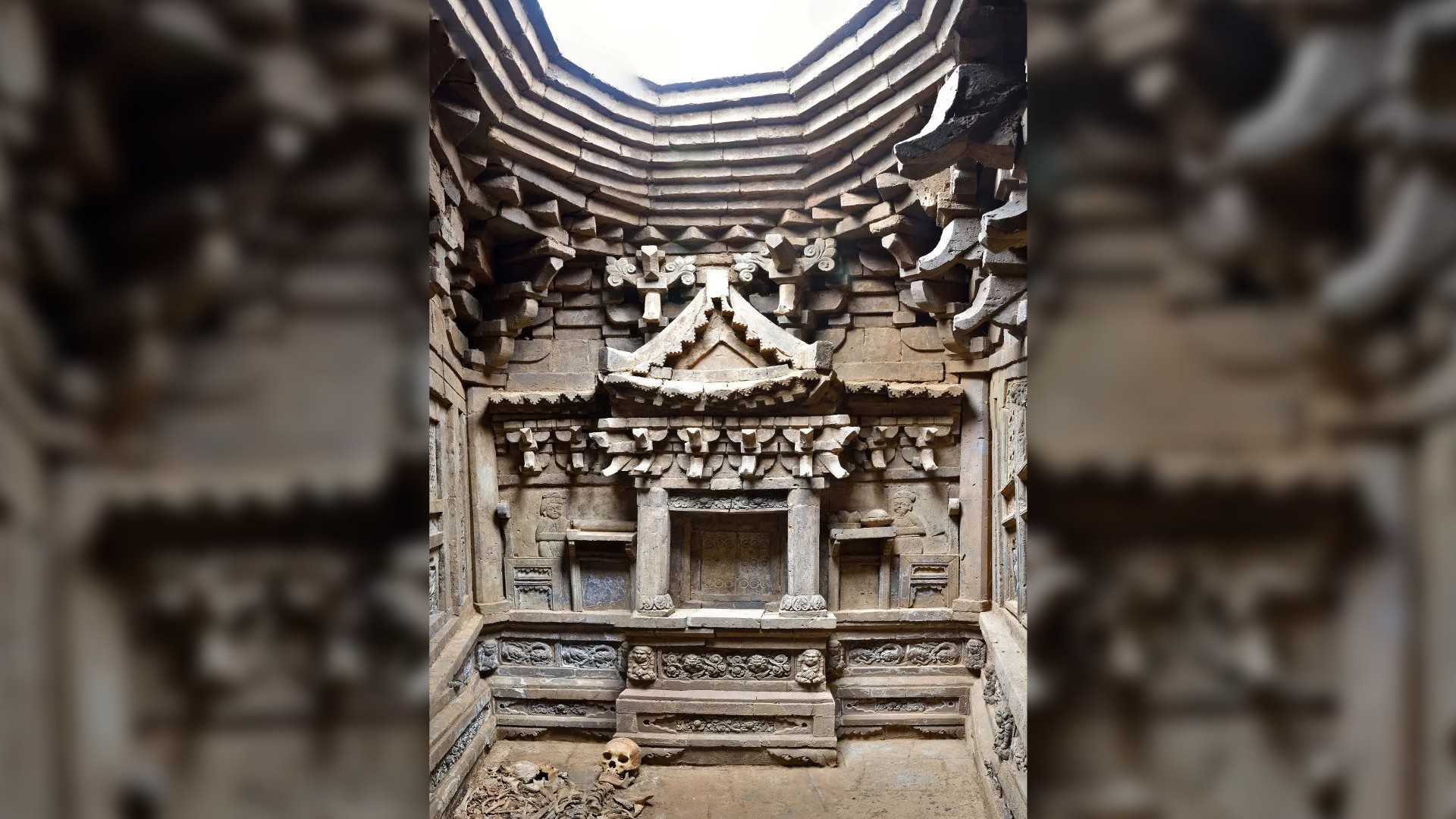
A stunning brick tomb thought to be more than 800 years old has been discovered in northern China by workers renovating stormwater drains.
The tomb contained three bodies — two adults and one child — as well as several pottery items. One of these, a "land coupon" inscribed with writing, indicates that the tomb was built between A.D. 1190 and 1196, when the region was ruled by the Jurchen Jin or "Great Jin" state.
According to the Shanxi Institute of Archaeology, the tomb was unearthed by the workers in mid-2019 near the village of Dongfengshan, in Yuanqu County, about 400 miles (650 kilometers) southwest of Beijing.
Archaeologists from the institute then carried out an excavation to document the tomb, and a full report on the work was released in February, according to a press release from the Chinese Academy of Social Sciences (CASS.) The south-facing tomb has similarities to others found in the region from the time, such as a ceremonial "gatehouse" on its northern wall, but it is relatively simple, according to the report.
Related: Bronze Age ice skates with bone blades discovered in China
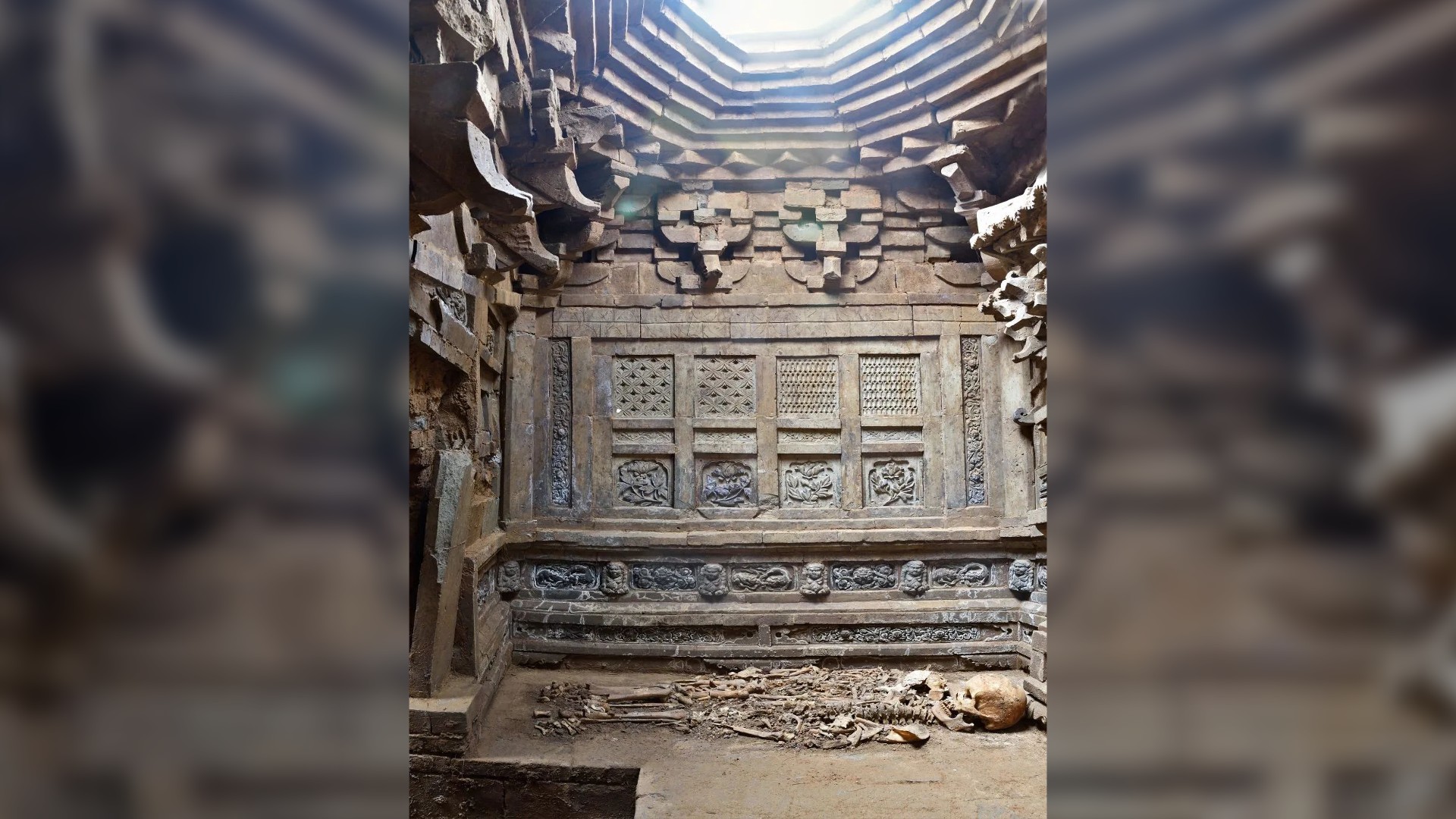
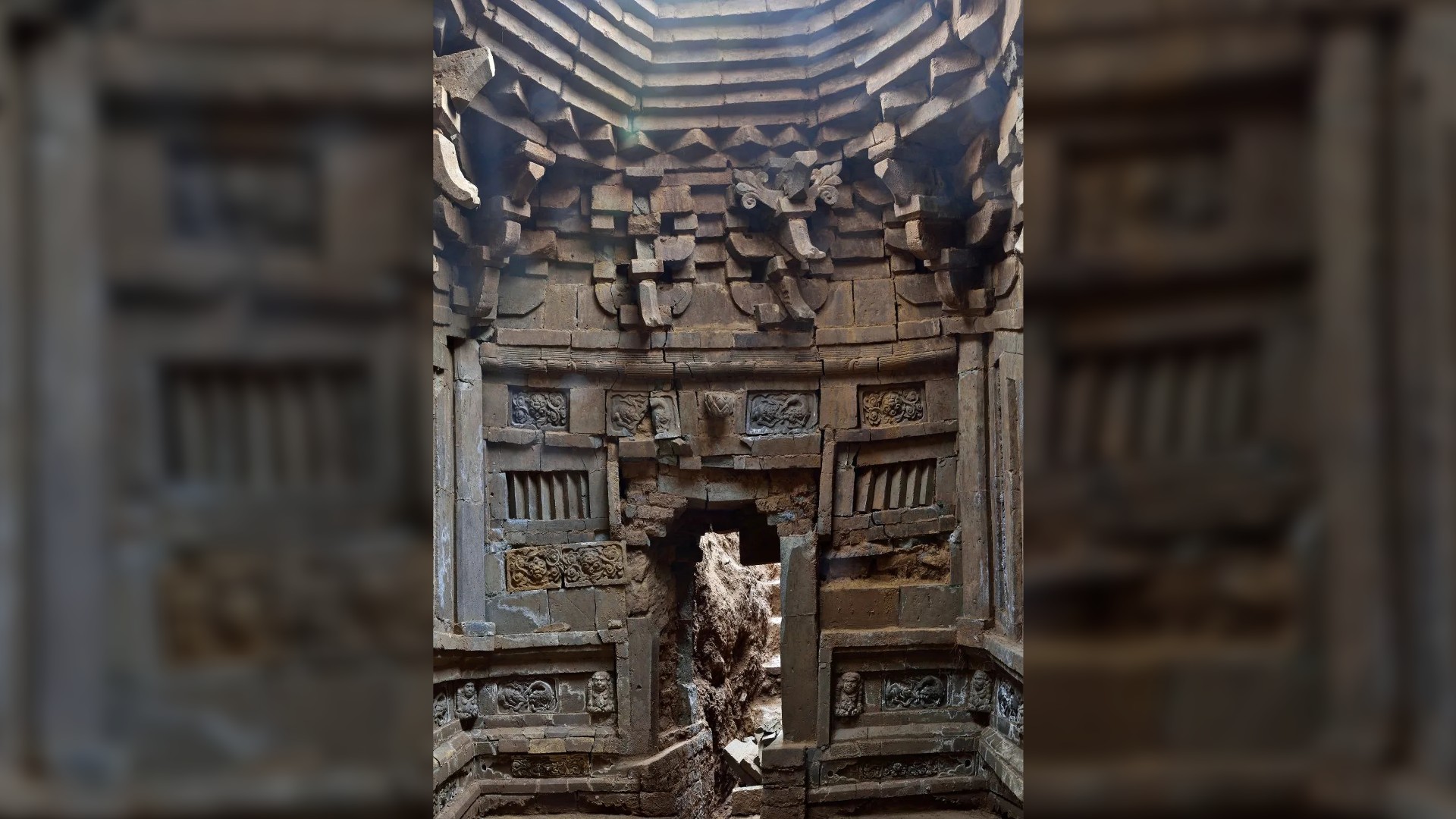
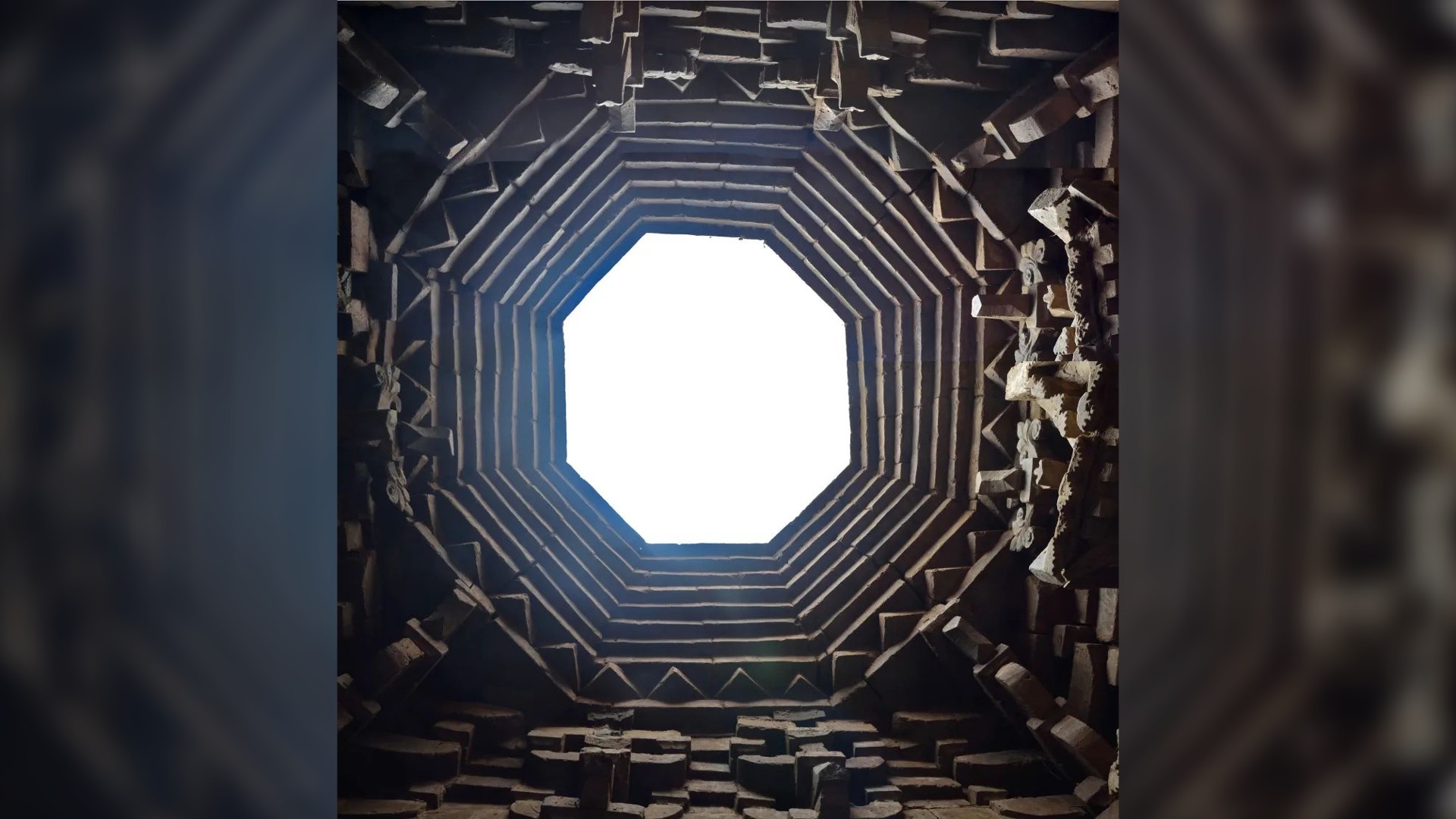
The buried structure consists of a "tomb road" to a staircase that leads down to a door in the inner chamber, which is a square about 6.5 feet (2 meters) long on each side, beneath an elaborate octagonal spire made of stepped bricks.
The entire chamber is faced with bricks shaped to look like carved wood, which the archaeologists say were not painted. The tomb also features ornate decorations on the walls, including lions, sea anemones, flowers and two figures that are thought to represent guardian spirits.
Sign up for the Live Science daily newsletter now
Get the world’s most fascinating discoveries delivered straight to your inbox.
Archaeologists from the Shanxi Institute say the three bodies found there were those of two adults aged between 50 and 60 years old, and one child aged between 6 and 8 years old.
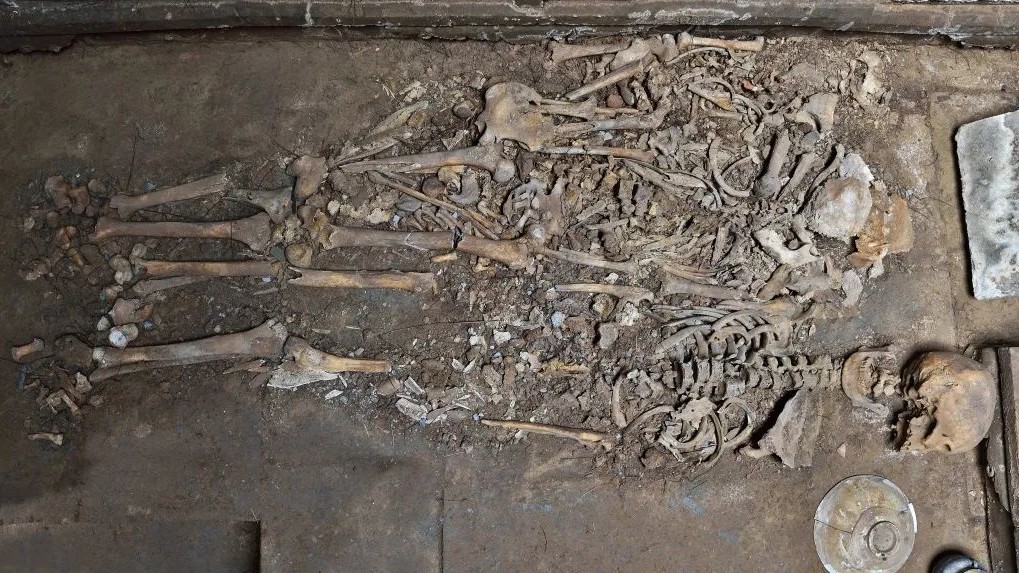
Jurchen Jin
"Great Jin" was the second Chinese state of that name and it is often referred to as the Jurchen Jin state to distinguish it, said Julia Schneider, a professor of Chinese history at University College Cork in Ireland who was not involved in the tomb's discovery.
Jurchen Jin emerged in about A.D. 1115 amid rebellions against the region's earlier Liao Dynasty, and fell to the invading Mongols in 1234. But for the intervening century it was one of the major powers in China.
Although many of its subjects were ethnically Han Chinese, Jurchen Jin was ruled by an imperial family that was ethnically Jurchen, a semi-nomadic people from northeast China related to the Manchu people, Schneider told Live Science. (The Manchu were an ethnic group native to China's northeast and surrounding regions — called Manchuria — who conquered China and Mongolia in the 17th century and ruled for about 250 years.)
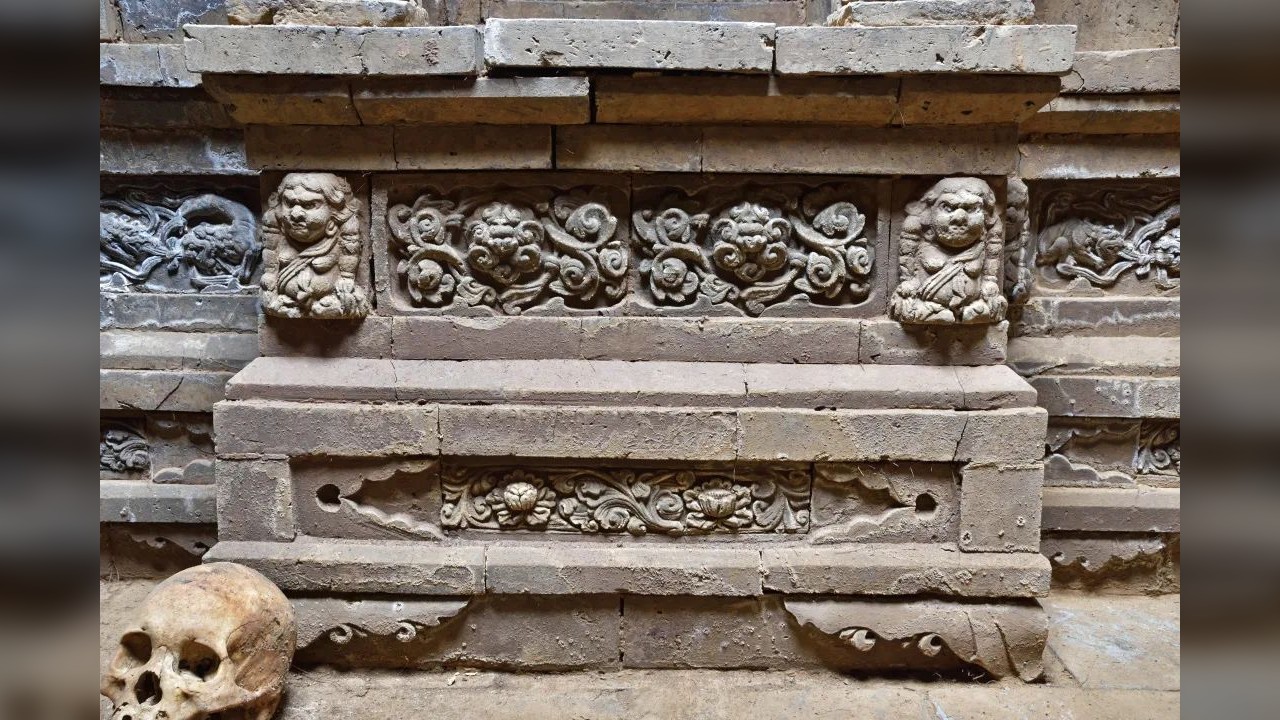
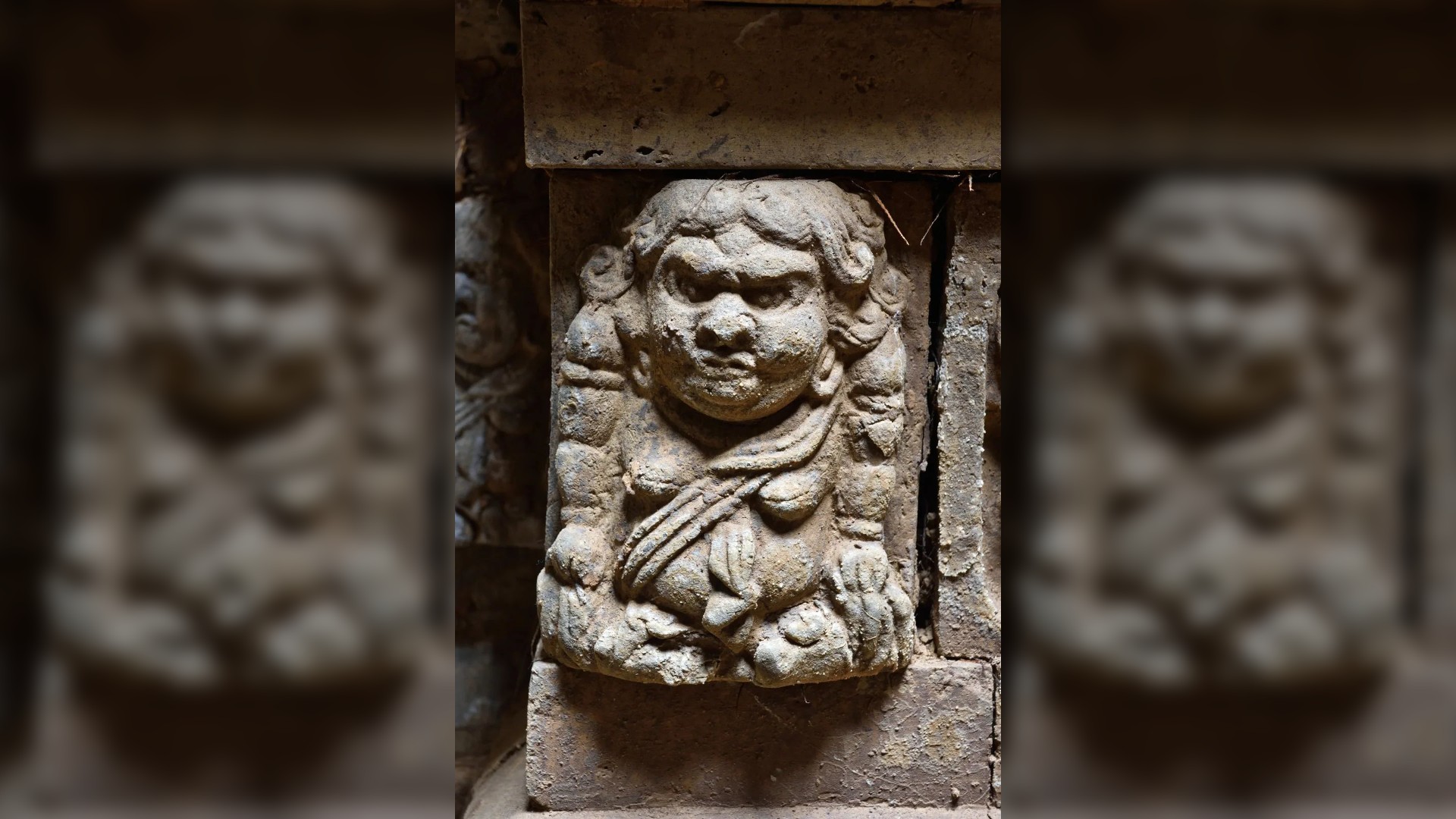
A census in 1207 gave the population of the Jurchen Jin state as 53 million people, but "probably less than 10% were Jurchen," Schneider said.
"What makes the Jurchen Jin so interesting was that this was a multi-ethnic empire," she said.
While many of its subjects were oriented toward Confucianism and other ideologies it considered "Chinese," the Jurchen Jin state developed a distinctive script for the Jurchen languages and established dual administrations to oversee its Chinese and Jurchen subjects, she said.
Chinese tomb
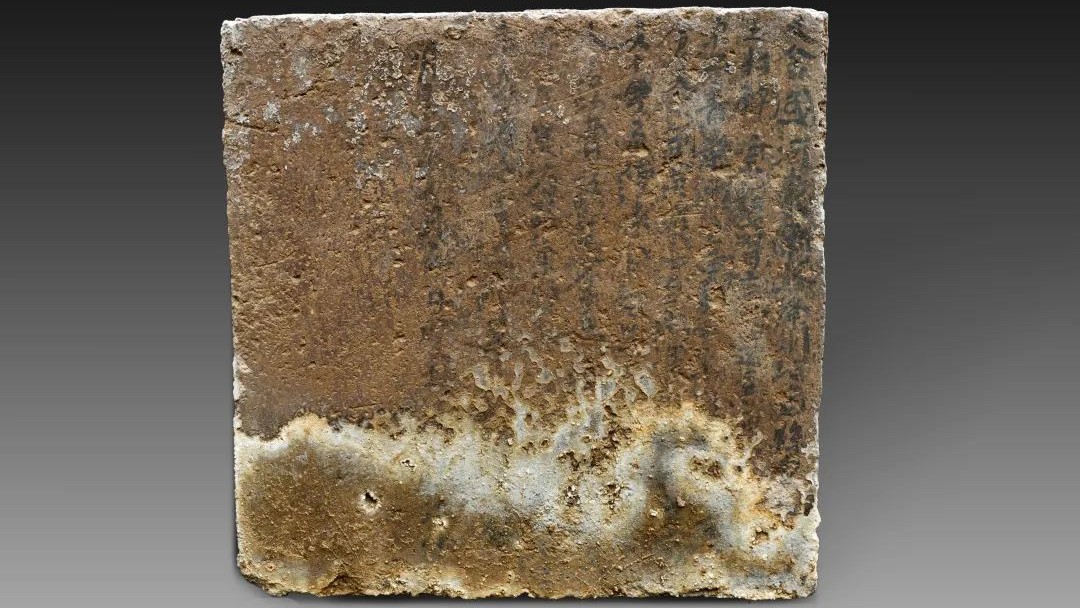
In the case of the tomb at Dongfengshan: "I'm not an archaeologist, but my idea is that this is a Chinese tomb, based on its location in the very south of the Jurchen state," Schneider said.
That region was mostly populated by Han Chinese, rather than ethnic Jurchen. It was possible that Jurchen dead had been entombed there in the Chinese style, but "I don't see anything particularly Jurchen," she said.
The statement from CASS said the land coupon meant the structure could be firmly dated, which would provide a basis for dating other Jurchen Jin structures and artifacts found in the region.
Tom Metcalfe is a freelance journalist and regular Live Science contributor who is based in London in the United Kingdom. Tom writes mainly about science, space, archaeology, the Earth and the oceans. He has also written for the BBC, NBC News, National Geographic, Scientific American, Air & Space, and many others.










